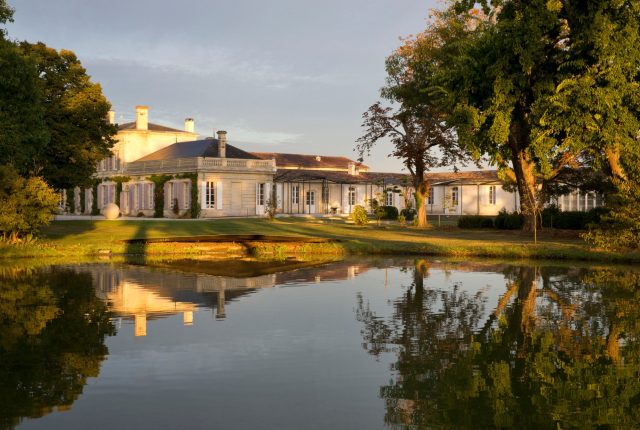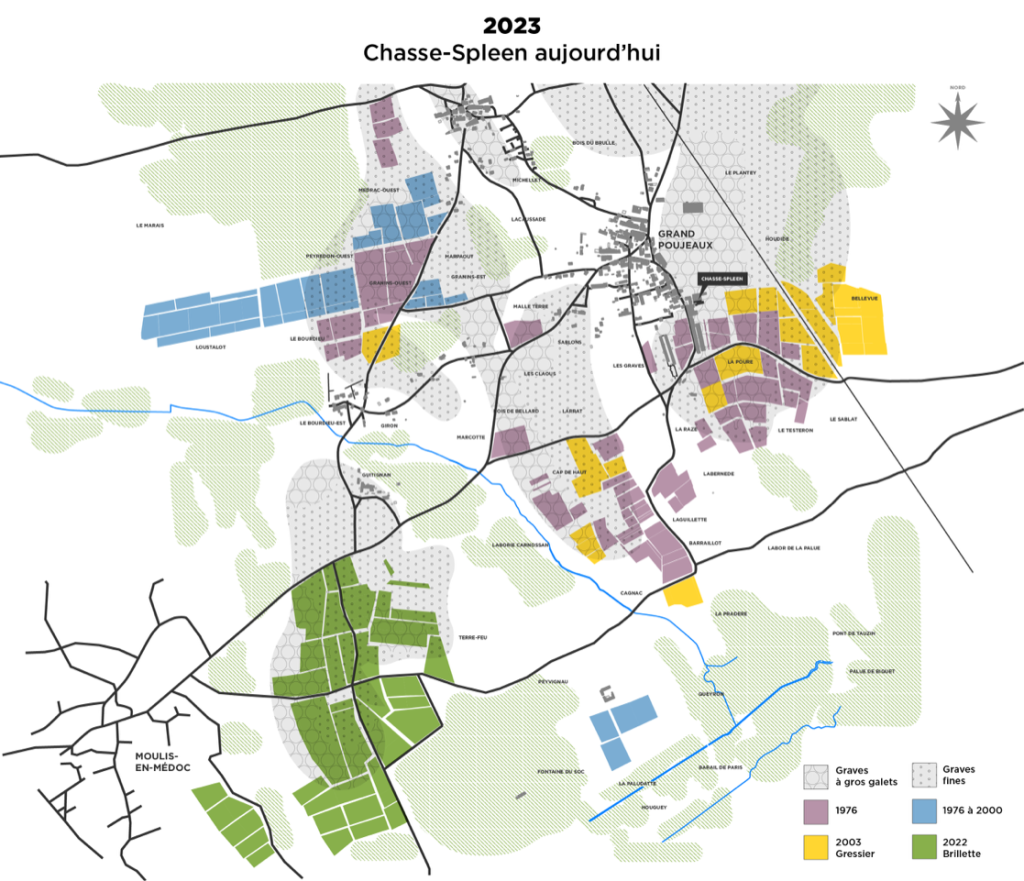Chasse-Spleen acquires its Moulis neighbour Brillette
In big news for Bordeaux lovers, the much admired estate Château Chasse-Spleen has announced the acquisition of neighbouring estate Château Brillette making it the largest property in the Moulis-en-Médoc appellation.

It is also seeking recognition, under French law, as a société à mission. The purpose of this is to enshrine, in a quasi-legal manner and for perpetuity, with an annual audit, its guardianship of the social, societal and environmental impact of all of its activities.
Founded in 1863, just eight years after the classification of the leading wines of the Médoc, Chasse-Spleen is one of the region’s leading unclassified estates. Indeed, it is sometimes even referred to as an honorary memory of the St Julien grands crus.
Yet it is perhaps most famous for its distinctive name, the origins of which remain somewhat disputed. In one version of the story (typically, the English), the property owns its name to the visit of Lord Byron to the estate in 1821 after which (and presumably, having imbibed heavily) he was reputed to have proclaimed, “quel remède pour chasser le spleen” (what a cure for melancholy!). In the rather more sober (and, invariably French) variant of the tale, it as a tribute to the poem ‘Spleen’ of another famous visitor to the estate, Charles Baudelaire, that this property acquired its name.
The purchase of Brillette follows the earlier acquisition and incorporation into Chasse-Spleen, in 2003, of the terroirs of Gressier Grand Poujeaux. The two acquisitions together bring the overall size of the estate up to 125 hectares, consolidating Chasse Spleen’s position as the largest property in the appellation. It also brings the overall proportion of Cabernet Sauvignon in the vineyard up to 60%.
Acquired in 1976 by the charismatic entrepreneur Jacques Merlaut, Château Chasse-Spleen has been run since 2000 by Céline Villars-Foubet and her husband Jean-Pierre Foubet, the third generation of the family to hold this position.
With the addition of the Château Brillette vineyard, Chasse-Spleen has acquired the final gravel outcrop that it was missing. For the first time in its history, the four gravel ridges and the shallow clay on limestone terroir of the western fringe of the appellation, which together give Moulis its identity, have now been brought together within a single estate.
The new structure of the enlarged vineyard can be seen in the figure below, with the parcels from Chateau Brillette in the bottom left-hand corner (in green).
Partner Content

As Chasse Spleen’s co-manager, Céline Villars-Foubet, explains, “We are very proud to have been chosen by our friends, the Flageul family, to continue to give life to this great terroir, which is known for the quality of its gravel. The acquisition optimises our range of soil types, which will bring even more depth to our wines.”
The Merlaut and Flageul families, both of whom settled in Moulis and fell in love with its terroirs, have worked in parallel to create a stylistic identity typical of their respective vineyards. For Jean-Louis Flageul, the father, the decision to approach Chasse-Spleen was explained by his determination to give the vineyard a future worthy of his passion and to ensure rigorous quality in the wines. As his son, Erwann Flageul, puts it, “Our families have been linked for several generations. Both of them decided to settle in Moulis in the early 1970s. So when our other activities demanded more of our time, we decided to pass on the Brillette terroir to our friends at Chasse-Spleen with complete confidence.”
The 35 hectares of the Brillette vineyard currently in production form a contiguous group of fine gravel soils with a few large plots of pebble gravel. The surrounding ecosystem includes forest, marsh and meadows. Already distinguished in the 1874 edition of Feret’s famous guide to Bordeaux and its wines, it will enhance the profile of Chasse-Spleen, notably bringing an increased proportion of Cabernet Sauvignon to this legendary wine.
The blending is entrusted to Eric Boissenot, who worked at Brillette and continues to work at Chasse-Spleen, following in the footsteps of his father Jacques as consultant oenologist.
As he himself explains, “I know both terroirs well, having advised Brillette and Chasse-Spleen for a long time. The merger of the two vineyards will certainly bring an even more Médoc-like aspect to the Chasse-Spleen blend, with the increased proportion of Cabernet Sauvignon on deep gravel.”
With this acquisition, Chasse-Spleen confirms its position as the leading vineyard of the Moulis-en-Médoc appellation in both surface area and volume. Already well-established on the domestic market, in French-speaking countries and in the UK, the aim is to further strengthen its export presence through this project and through its recognition as a société à mission.
Related news




